Page 1 of 2
Blackwood King Billy O Model
Posted: Wed Mar 11, 2009 9:50 pm
by Bob Connor
This is the King Billy/Blackwood instrument I alluded to in the other thread.
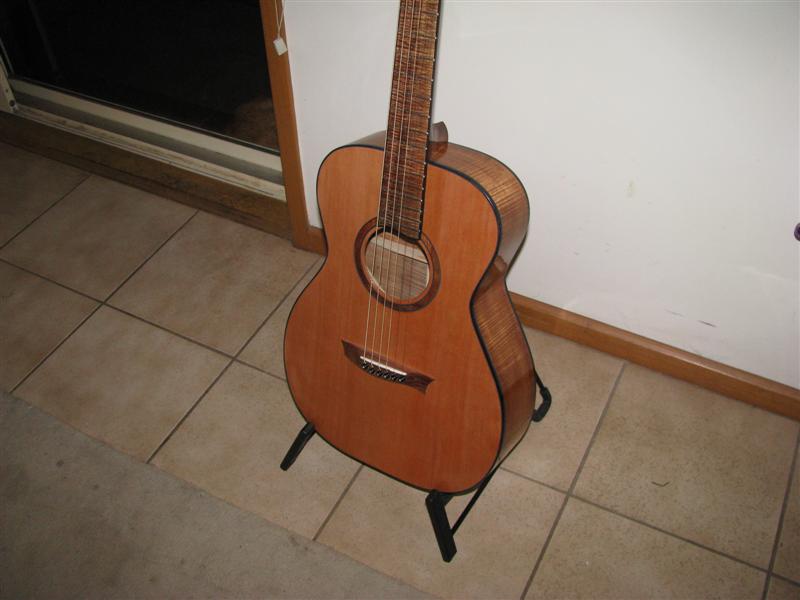
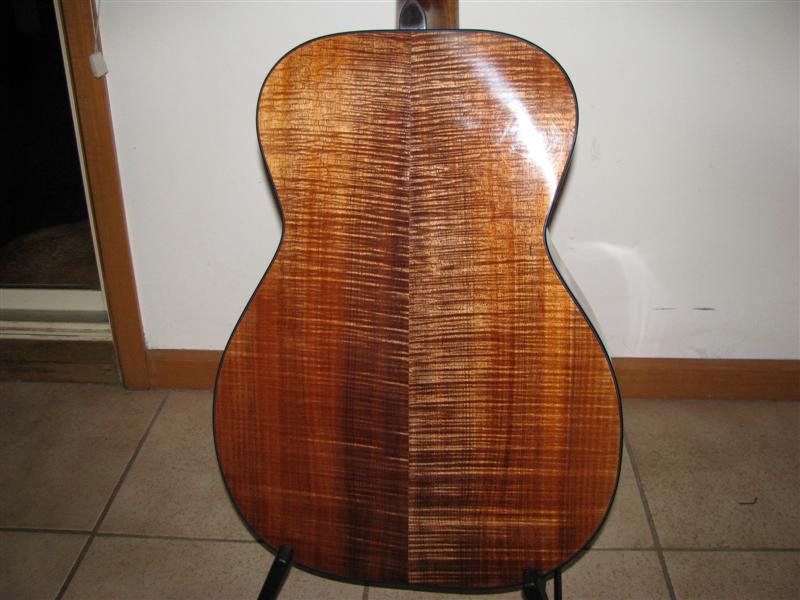
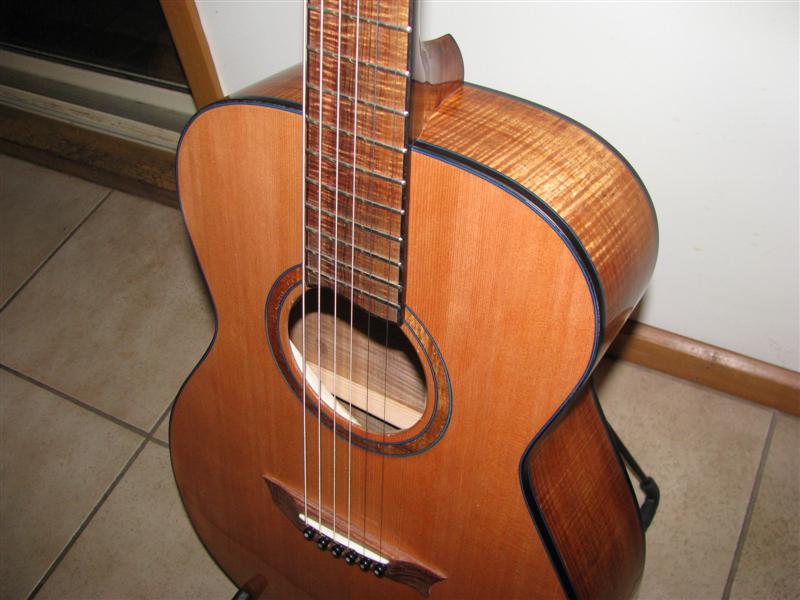
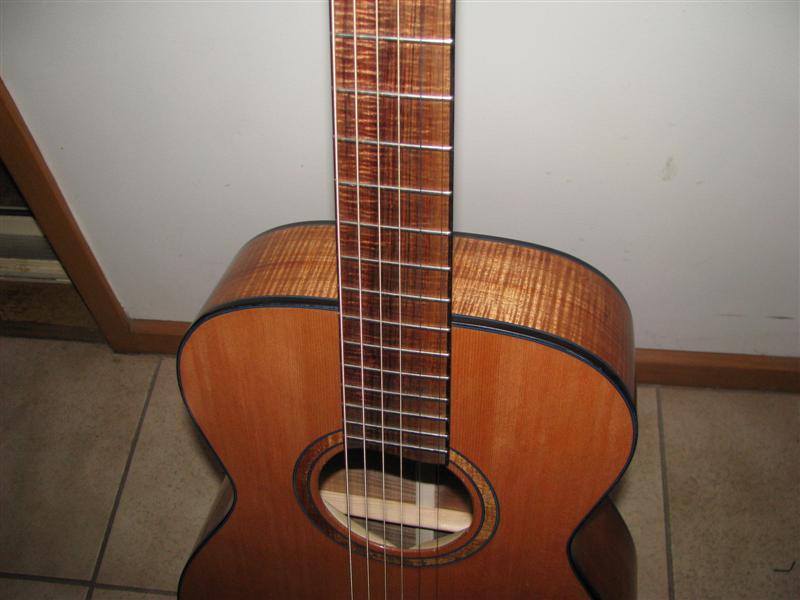
This is the second one of these we've built with first one residing in Tasmania now.
They are identical except that the first one had a top thickness of 2.75mm and the second I left a little thicker at 3mm. The first was made from Victorian Blackwood, the second from Tasmanian Blackwood (for all intents and purposes identical wood - similar weight and density) Bridges on both were Blackwood and of similar weight. The King Billy was cut from the same billet.
The second instrument is way louder than the first and has incredible presence in the midrange. It is quite a remarkable sounding instrument. I'm sure Allen MacFarlen will chime in here as he was quite surprised when he played it last week.
The only major difference is this.
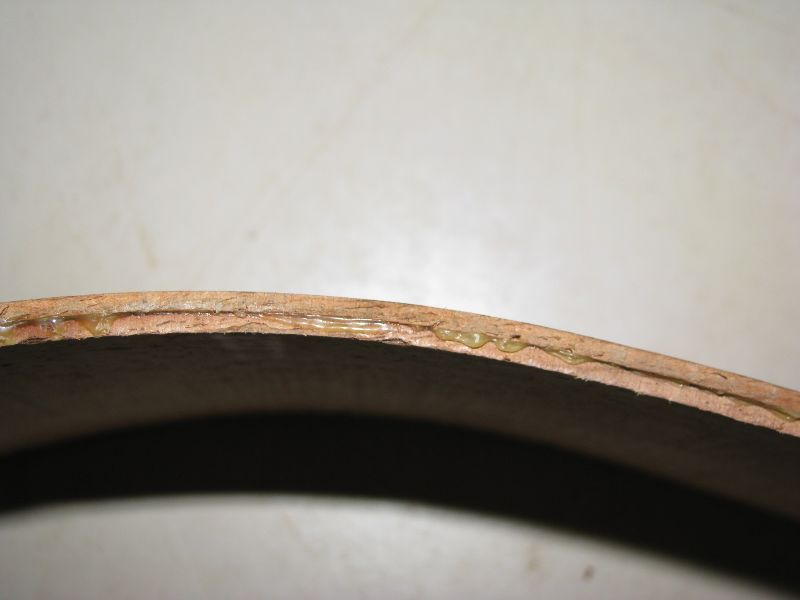

Double sides!
I know a few builders in the States are laminating sides similar to this but most of them are taking each layer down to around .040" so when they are glued together they are around the same thickness as solid sides when bent.
These ones have been bent at .080 and then glued together for a thickness of.160". So they are very thick and very stiff. But the finished instrument isn't that heavy.
The theory here is to reduce vibrational damping in the sides and allow the top and back to reflect the energy of the top and back thus giving the instrument greater power.
It certainly seems to have worked in this case but I'd like to try it on the next few instruments to ensure it wasn't simply an aberration.
I am surprised there is SO much difference between this and the previous guitar. Pleasantly surprised mind you but still sceptical until we can reproduce it.
Is anyone else doing anything similar? (building guitars with plywood sides

)
Re: Blackwood King Billy O Model
Posted: Thu Mar 12, 2009 12:51 am
by John Maddison
bob wrote:
Is anyone else building guitars with plywood sides?
Smallman ...
laminated Rosewood.
Posted: Thu Mar 12, 2009 6:01 am
by Nick
Pure guitar porn


really good looking guitar Bob.
Love the blackwood fingerboard, beautifully figured & really sets the instrument off.
I like the idea of the sides, the theory certainly makes sense to me. Did you keep the linings the same width as usual or did you reduce them to allow for the thicker sides? If you kept them standard I was just wondering if you had to 'loosen' the top up a little more to allow for the wider glue area?
Posted: Thu Mar 12, 2009 7:15 am
by Allen
It is indeed a great sounding guitar. Certainly a stand out in the mid range out of the bunch that Bob showed me. I think its well worth exploring what double sides will do, though I don't recon I'll be using 2 sets of master grade wood for the laminations. Smallman said that he uses Hoop Pine for his, so I'l have to go down to the local timber merchant and see whats available.
Posted: Thu Mar 12, 2009 7:38 am
by Bob Connor
Nick - we used standard sized reverse kerf linings on this one. The King Billy Pine is not stiff at all across the grain but it would have to be taken into consideration when using any other to woods.
I think I'll take the next set of sides a little thinner than this.
Posted: Thu Mar 12, 2009 7:43 am
by Nick
bob wrote:Nick - we used standard sized reverse kerf linings on this one. The King Billy Pine is not stiff at all across the grain but it would have to be taken into consideration when using any other to woods.
I think I'll take the next set of sides a little thinner than this.
Thanks Bob

Will be interesting to see how the next one works out, the principle sounds like it could have some validity.
Posted: Thu Mar 12, 2009 10:10 am
by kiwigeo
Technically were talking laminate rather than plywood arent we? In my mind plywood is at least three layers usually laminated with grain at right angles to each other.
Posted: Thu Mar 12, 2009 10:11 am
by Lillian
What a beauty Bob. The King Billy looks a lot like cedar in the picture. Similar?
I'm looking forward to reading more about this and your take on double sides. I'm planning number 2 in my head and the ideas are just swirling.
Any chance of a sound clip?
Posted: Thu Mar 12, 2009 11:02 am
by Bob Connor
I was being facetious with the plywood remark Martin. A lot of people using this technique get a bit shirty when you refer to it as plywood.

I'll see what I can do about a sound clip Lillian.
King Billy is in between Cedar and Engelmann in hardness but it will vary as most timbers will.
That was photographed with a flash but it's an apricot colour under natural light.
Posted: Thu Mar 12, 2009 11:34 am
by Paul B
So thin sides rob energy from the top and back?
I suppose this stands to reason really. Think of a short length of steel tube with a rubber diaphram fitted to each end. You tap on one diaphram and you'll get a greater response (movement) from the one on the other side than you would if the tube was made out of, say, rubber...
Whether this equates to a better, more powerful guitar??? I guess your results (not to forget Smallman here either) suggests it does.
Great, you've just made my guitar making that much more difficult, thanks.
Great looking ax by the way Bob, but I find I'm always saying that about your guitars these days.
Posted: Thu Mar 12, 2009 1:12 pm
by sebastiaan56
Hi Bob,
As others have said, pure porn, verrry niccee
A question, the finger board, Im assuming the timber was sealed, epoxy? CA? Wax?
Thx
Posted: Thu Mar 12, 2009 1:29 pm
by Ron Wisdom
Beautiful, Bob. Clamping those sides to dry must have been a bear.
Ron
Posted: Thu Mar 12, 2009 1:40 pm
by Bob Connor
The fingerboard just had a buff Sebastiaan.
Ron - the sides weren't that difficult to glue. We used Titebond and clamped them to the mold from the side bender. (we use solid molds)
When I was in the States last year Bob Cefalu and I were contemplating the possibilty of glueing the sides together flat and then putting them in the side bender. The heat would allow the glue to slip a bit while bending.
We couldn't see why it wouldn't work
It's certainly something I'm going to try with some spare sides.
Posted: Thu Mar 12, 2009 4:18 pm
by Dennis Leahy
Bob,
Where are your homely guitars?
Another stunner!
Very cool experiment with the sides, and yes, I would think very heavy. I also would think that 3-ply would "sound" (or not sound) the same.
I'd love to hear your A-B comparison of the two guitars.
Dennis
Posted: Thu Mar 12, 2009 6:00 pm
by DarwinStrings
In my opinion this approach works well for better volume.
Another way to think of it is. If you have a speaker box that is made off cheap poorly made 4mm ply (cheap as in bad layers with gaps etc) and you then try to crank up the volume on the speaker the whole thing will shake all over the shop and give a rubbish sound, the speaker it self is loosing energy because the sides are using that energy to move.
However if you use 19mm marine ply (in marine ply each layer is a quality veneer affording very good joint between each sheet) you end up with a solid speaker that you can crank up and it still sounds good. The box sits still and all the energy from the diaphram is transfered to the movement of the cone, not the cone plus box.
Before building guitars i made a few speaker boxes and could never bring myself to make a thin sided or backed guitar as i see the guitar as no more that a speaker plus box, 3mm is the minimum I use on a normal sized guitar and have been thinking about trying to bend 3.5 - 4mm recently, which also means working on a design that can be bent from thicker wood which can be difficult as you can't effectively use a compression strap because of the waist.
The pics are my latest design and am thinking with a little less tight bends I will be able to increase my rib thickness. Also the cutaway doesn't rely on a tighter bend in fact i just bend two sides the same as you would on a non cutaway guitar then cut a bit out of the upper bout and re-join it. The other problem is getting thicker stock.
Oh and look at the head block, now thats a piece of ply.
Thanks for posting Bob, it is excelent to see some experimenting going on, maybe your approach might be better for me than thicker stock.
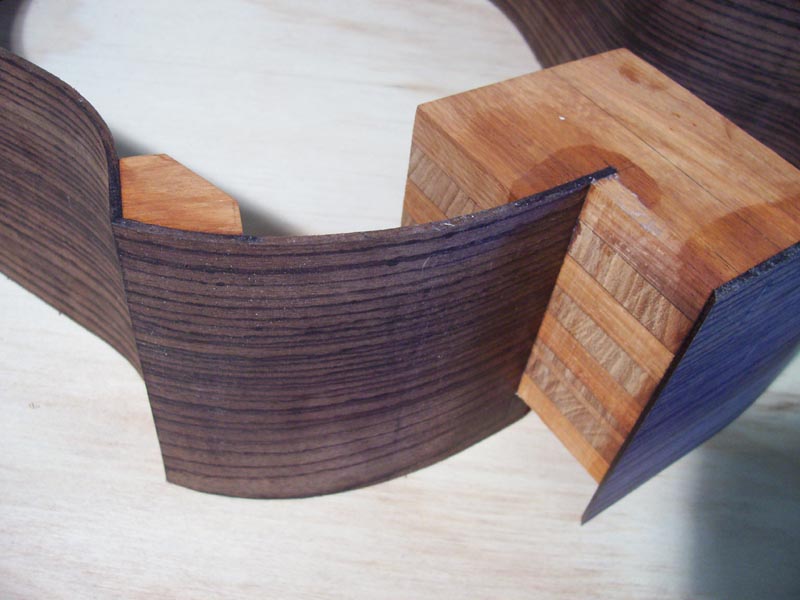
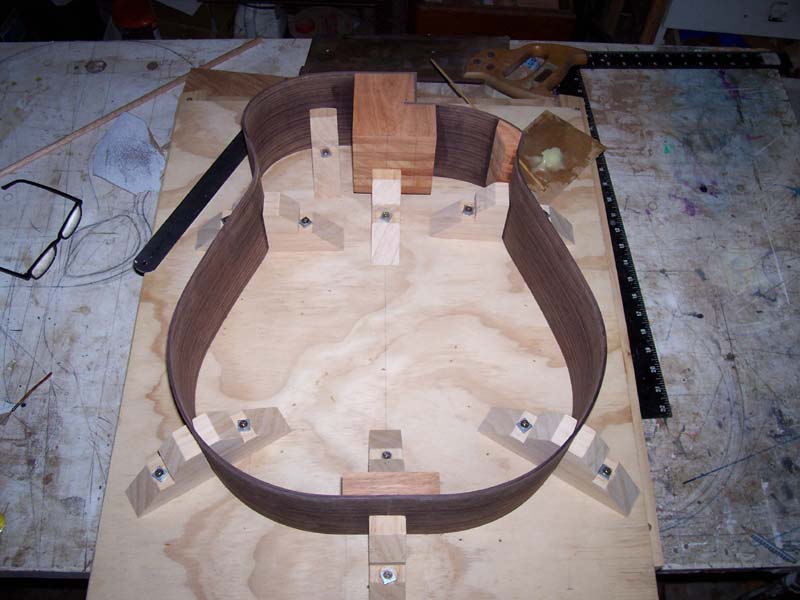
Jim
Posted: Thu Mar 12, 2009 8:07 pm
by Bob Connor
The other benefit I like about these double sides is that they'll keep the guitar in shape over a longer period of time. That is they'll be more resistant to the neck system trying to push the fingerboard extension through the top of the guitar.
Dennis wrote:
Very cool experiment with the sides, and yes, I would think very heavy
Dennis it doesn't make this guitar feel heavy but our instruments are usually fairly light. So a bit of extra beef isn't going to concern me if I can reproduce the response on another one. BTW there's some Blackwood out of the same billet in your "care parcel"
Posted: Fri Mar 13, 2009 12:27 pm
by DarwinStrings
I'll have ten on you reproducing the volume again Bob.
Jim
Posted: Fri Mar 13, 2009 1:36 pm
by Stephen Kinnaird
Bob, another plus for the stiff sides, as I see it, is in the realm of stresses.
Having started during the days of Arthur Overholzer, I can't quite shake the idea that stresses are a good thing to avoid. If we're not relying on the top to stabilize the form of the instrument, if instead the sides hold the shape all by themselves, then the top has less stress built in.
This to say that it might just be a bit freer to vibrate w/out the stress of holding the shape.
What say?
Steve
Posted: Fri Mar 13, 2009 2:51 pm
by Taffy Evans
I love the look of your guitar Bob, and I agree with the stable sides theory.
I have never thought of laminating side timbers for stiffness, but I have tried to stiffen my sides by inlaying purfling on the sides below the binding, this means using linings that go further up the sides.
I have always used fairly substantial, without looking bulky, timber reinforcing strips on the insides also for this reason. Comments of those guitars was that they were loud for their size, now I'm thinking that the sides may have contributed to this.
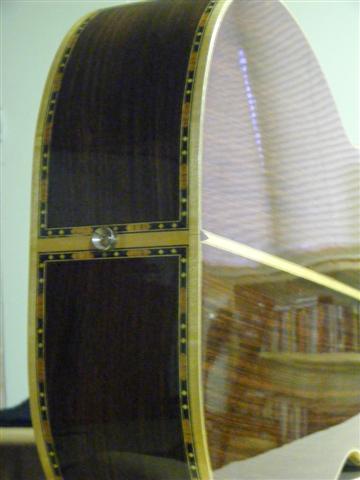
Posted: Fri Mar 13, 2009 4:58 pm
by Rick Turner
Larson Brothers guitars..."built under stress"...some of the best steel string guitars ever made...
There goes another theory, eh?
Posted: Fri Mar 13, 2009 5:01 pm
by Rick Turner
Oh...I'll get some photos of my 1932/'33 Loar ViviTone guitar. Sides are about 1/4" to 5/16" thick and laminated.
Not much new under the sun, and all that...
Posted: Fri Mar 13, 2009 5:17 pm
by Bob Connor
Rick Turner wrote:Larson Brothers guitars..."built under stress"...some of the best steel string guitars ever made...
There goes another theory, eh?
Hmm. Not necessarily Rick.
Just because some nice sounding instruments were made under stress doesn't mean you can't build some nice sounding instruments built with no stress.
Posted: Fri Mar 13, 2009 6:53 pm
by DarwinStrings
bob wrote:
Just because some nice sounding instruments were made under stress doesn't mean you can't build some nice sounding instruments built with no stress.
Good point Bob. Variety is a great thing. Many different ways of doing things all giving great results, just different results.
Jim
Posted: Fri Mar 13, 2009 7:30 pm
by Runn3r
wow...beautiful figured blackwood...
...stunning!
Posted: Fri Mar 13, 2009 7:38 pm
by kiwigeo
Isnt a spruce top with a 25' arch in it under stress???? If you took out the braces it'd go flat.






 )
)







